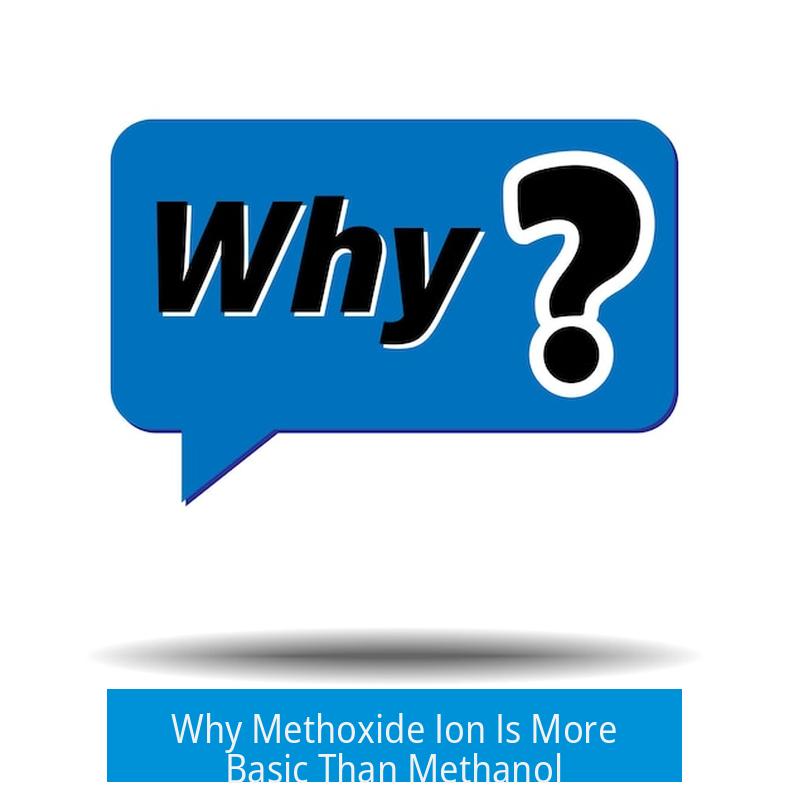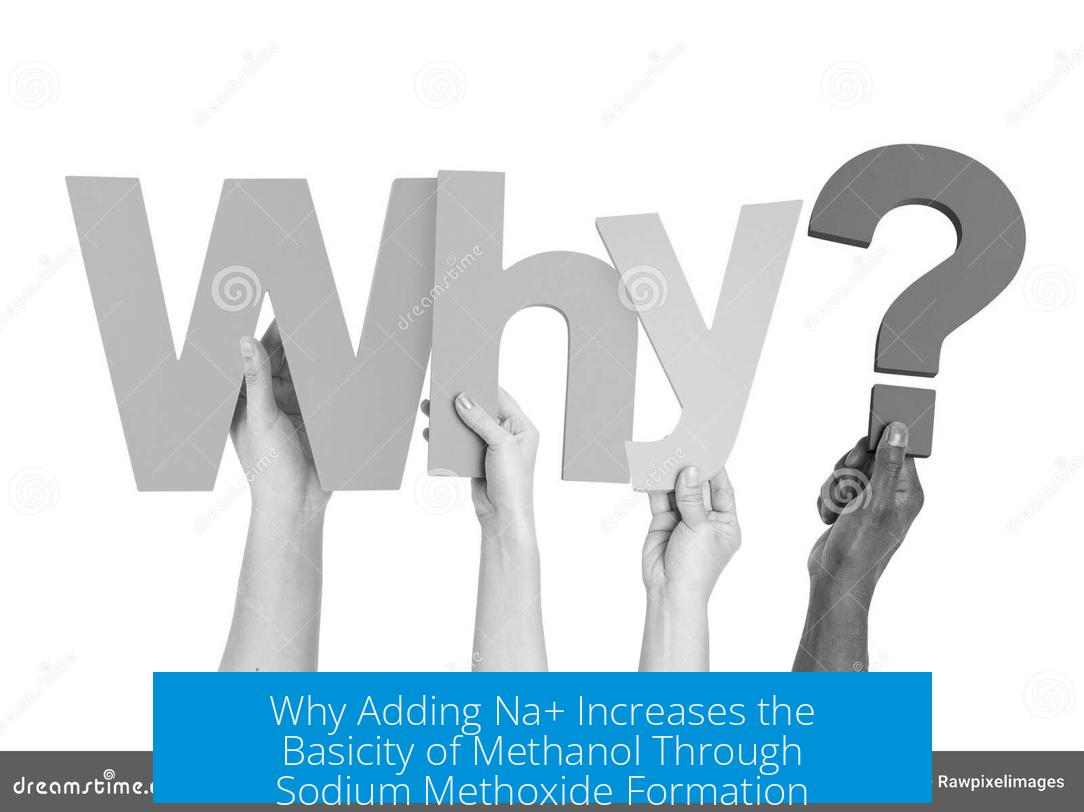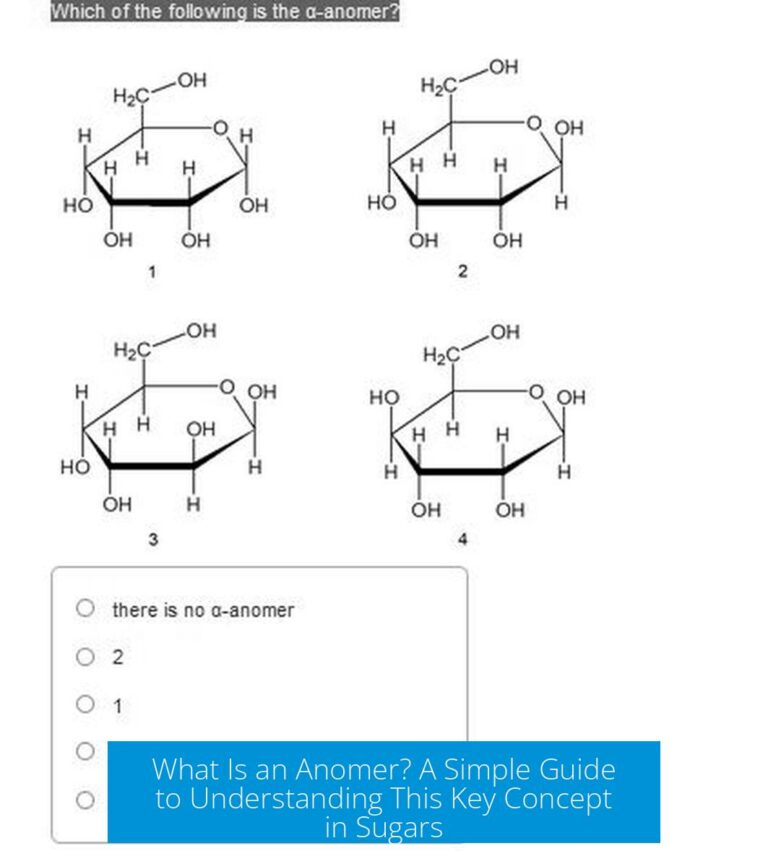Why Does Adding Na+ Make Methanol Basic?

Adding Na+ to methanol creates sodium methoxide, an ionic compound that releases methoxide ions (OCH3-), which are significantly more basic than methanol itself. The Na+ ion acts as a counter ion, stabilizing the charged methoxide ion and enabling its basic properties in solution.
Formation of Sodium Methoxide
Sodium methoxide is formed when sodium metal dissolves in methanol. In this reaction, sodium donates an electron, producing Na+ ions and methoxide ions:
Na (s) + CH3OH → Na+ + CH3O- + 1/2 H2 (g)
This conversion transforms methanol, a neutral molecule, into sodium methoxide, an ionic species.
Role of Na+ as a Counter Ion
- The methoxide ion (CH3O-) carries a negative charge.
- Na+ balances this charge, stabilizing the ion pair.
- Without a counter ion, a collection of methoxide ions cannot exist freely.
By providing this electrostatic balance, Na+ enables the methoxide ion to persist and act as a strong base.
Why Methoxide Ion Is More Basic Than Methanol

| Species | Charge | Basicity | Key Feature |
|---|---|---|---|
| Methanol (CH3OH) | Neutral | Weak base | Has acidic proton; lone pairs on oxygen |
| Methoxide ion (CH3O-) | Negative | Strong base | Extra lone pair; no acidic proton; higher nucleophilicity |
The negative charge on the methoxide ion represents an additional lone pair ready to accept protons or attack electrophiles. Methanol’s proton can be donated, making it partly acidic. Methoxide, lacking this proton and bearing a full negative charge, shows stronger basic and nucleophilic behavior.
Summary of Basicity Enhancement
- Na+ converts methanol into sodium methoxide.
- Sodium methoxide dissociates into Na+ and methoxide ions in solution.
- Methoxide ion’s negative charge and lone pair enhance its ability to accept protons.
- Na+ stabilizes methoxide by balancing its charge, making the species stable and basic.





Leave a Comment